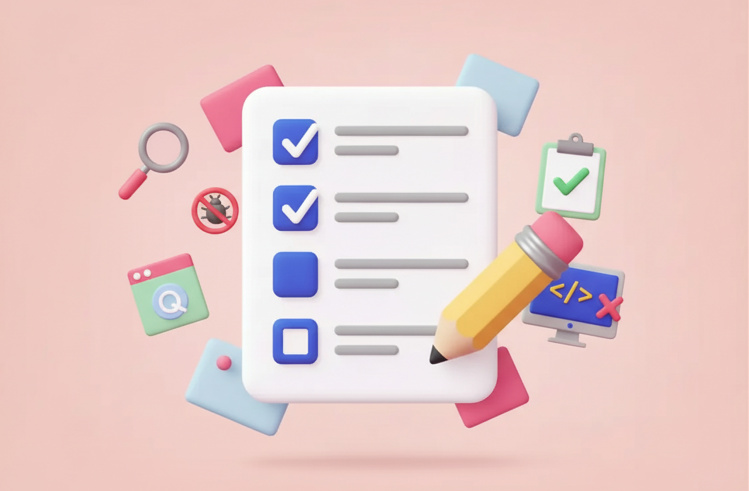To understand where we are going, we must look at where we came from. Testing has changed dramatically over the last few decades.
Testing in the Early Days
Alex started his career in the mid-1990s. This was during the rise of big threats like the Y2K bug. In the beginning, many people assumed that one tester could do everything.
However, as the internet grew and web applications became more complex, manual testing was no longer fast or efficient enough. It was clear that testing had to be automated. Tools like WinRunner and Rational Robot became popular for scripting tests.
The Tester-Coder Gap
The initial idea was that manual testers needed to become coders. However, forcing testers to learn complex scripting languages and programming concepts was not effective. The learning curve was simply too long for many professionals who did not have a computer science background.
Around 2005, efforts began to separate the roles. This led to tools focused on Business Process Testing. The goal was to split the work between the Subject Matter Experts (SMEs), who understood what needed to be tested, and automation specialists, who did the heavy coding.
Unfortunately, early architectural problems plagued these systems. Issues with object recognition and the complexity of collaboration meant these tools did not succeed broadly. Ultimately, the burden of automation fell heavily back onto specialized automators.
Current Challenges in Automation
Today, the testing industry faces several critical challenges fueled by the capabilities of generative AI:
- Speed of AI: Generative AI can write code much faster than humans. Automation is now driven by natural language, allowing processes to be automated without requiring high-level technical skills.
- Delivering More with Less: Leadership everywhere is pushing QA teams to deliver more coverage and faster results, often with fewer engineers due to process optimization and workforce reduction.
- Scalability Problems: Many traditional automation tools use DOM-based object recognition. This approach is not scalable and requires significant human maintenance when application interfaces change.
- Productivity Frustration: Teams feel frustrated when they have fewer resources but are expected to meet the speed and responsiveness of AI-generated processes.
Zap Test AI: Automation Without Barriers
To solve these modern challenges, Zap Test developed a revolutionary approach called the One-Click Process that they call “Record and Playback Reinvented.” This system removes old technical constraints by combining machine precision with human knowledge.
Computer Vision Object Recognition
The foundation of Zap Test’s tool is its advanced computer vision object recognition engine. Unlike tools that rely on the underlying code (DOM-based object classes and properties), Zap Test sees the screen the way a human does. This makes the automation resilient and far less likely to break when application changes occur.
The engine uses four fundamental technologies:
- Optical Character Recognition (OCR): It reads the text visible on the screen.
- Edge Detection: It identifies the borders and shapes of non-textual application elements.
- Relationship Anchoring: It links textual labels (like a field name) to non-textual objects (like the text box itself), maintaining calibration even if the screen resolution changes.
- Coordinates: Used as a last resort when visual identification is not possible.
This advanced recognition means Zap Test can smoothly automate any user interface, including web, mobile, desktop, and even mainframe terminal emulators.
The One-Click Automation Process
Zap Test AI streamlines test creation into a three-step one-click process driven by AI. The goal is to minimize manual scripting and maintenance.
Step 1: Input and Documentation Capture
The process starts by gathering test information. This can happen in two ways:
- ALM Integration: Zap Test can quickly connect to existing documentation stored in Application Lifecycle Management (ALM) tools like Jira or Azure DevOps.
- Rex Studio Recorder: Since perfect documentation is rare, the Rex Studio recorder allows humans (like manual testers or SMEs) to record their desktop actions. This creates a video scenario complete with audio narration that documents the workflow.
Step 2: AI Analysis (Plan Studio)
All gathered information, whether from ALMs or Rex Studio, is sent to Plan Studio. This AI-powered environment takes seconds or minutes to complete its analysis.
Plan Studio automatically analyzes the captured test cases based on multiple criteria:
- It identifies cases best suited for automation.
- It recognizes common steps to build reusable modules.
- It defines inputs and outputs to create data-driven automation.
This analysis creates an automation-friendly architecture outlined in natural language.
Step 3: Script Generation and Execution
Once the architecture is reviewed and approved, the AI takes over:
- Script Generation: With a single click, Plan Studio converts the textual architecture into ready-to-execute source code scripts (written in JavaScript). The AI handles object recognition and object calibration automatically.
- Execution (MRUN Studio): The resulting scripts are instantly ready for mass execution. MRUN Studio allows a single script to be executed across all test environments simultaneously (web, mobile, desktop) and supports hundreds of parallel execution threads using Farm (Zap Test’s private cloud technology).
The Human-AI Hybrid: Defining New Roles
The integration of Zap Test AI transforms how teams work. Instead of eliminating human roles, it repositions them to focus on knowledge and strategy. This is the model of the Human-AI Hybrid.
The QA process is now split into three distinct phases based on skill set:
Phase 1: Knowledge Capture (Green Quadrant)
This phase is handled by Subject Matter Experts (SMEs) and manual testers.
- Role: People who know the application processes the deepest.
- Contribution: They use Rex Studio to record processes that are missing or poorly documented. They do not need to know any coding or automation architecture.
- Goal: To translate application knowledge into a structured format for the AI.
Phase 2: Strategic Architecture Review (Blue Quadrant)
This phase is handled by a senior SME or an automation leader. This is the most critical and strategic part of the process.
- Role: Senior experts or business analysts.
- Contribution: They review the structure generated by Plan Studio. They must agree or disagree with the proposed reusable and procedural automation modules. They confirm the accuracy of test parameters, input, and output data flow.
- Goal: To ensure the processes are accurately analyzed and architected at the natural language level before any code is generated.
Phase 3: Code Validation (Orange Quadrant)
Automation specialists are still needed, but their role shifts from heavy coding to reviewing and optimizing.
- Role: Automation specialists or SDETs.
- Contribution: They review and analyze the source code that the AI agents automatically converted. Their work is much faster than writing the architecture from scratch. They only tweak certain things to ensure quality and consistency.
- Goal: To maintain the enterprise-grade readiness of the generated scripts.
By using this model, organizations can reduce the need for highly specialized coding skills in the initial test creation phase. This speeds up automation adoption and allows existing staff to contribute immediately.
Expanding Automation Beyond Testing
A major opportunity for teams today is to prove their worth by delivering value beyond traditional quality assurance. Alex emphasizes that testing and Robotic Process Automation (RPA) should not be treated as different disciplines.
Unified Automation Hub
For large enterprises, there is often significant redundancy because departments (like QA and Business Operations) work in isolation. A unified software automation hub allows a company to consolidate efforts and skills.
- Repurposing Scripts: The same automated scripts used for testing an application (e.g., logging in, booking a flight, filling out a form) can be repurposed for daily business operations tasks (RPA).
- Improving ROI: By eliminating redundant automation efforts, companies improve their return on investment (ROI). This proves the value of the QA team by turning their assets into operational tools.
Directors and leaders can use this ability to build an “Automation Center of Service” that delivers automation solutions across different groups within the company.
The Role of Automation Specialists in RPA
Automation specialists, instead of losing their jobs, become architects who solve complex business problems.
For example, automated scripts can be run nightly to generate fresh test data for manual testers.
- Data Generation: This eliminates the human error and time required for a manual tester to create necessary records.
- Efficiency: Instead of spending 20 minutes creating data for a 10-minute test, the tester can immediately begin the 10-minute test because the data is ready at 1:00 AM.
This demonstrates how unified automation delivers quantifiable speed increases and improved efficiency throughout the organization.
Conclusion: Adapting to the AI Future
The future of quality assurance and automation requires embracing new tools and shifting professional roles. By adopting AI-driven platforms, SMEs who possess deep business knowledge become essential automation drivers. Automators transition into strategic architects who review and fine-tune AI-generated code, ensuring enterprise stability.








